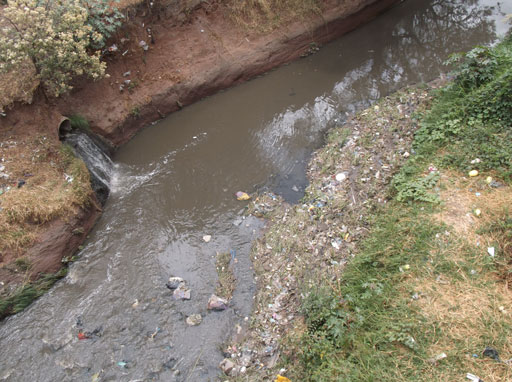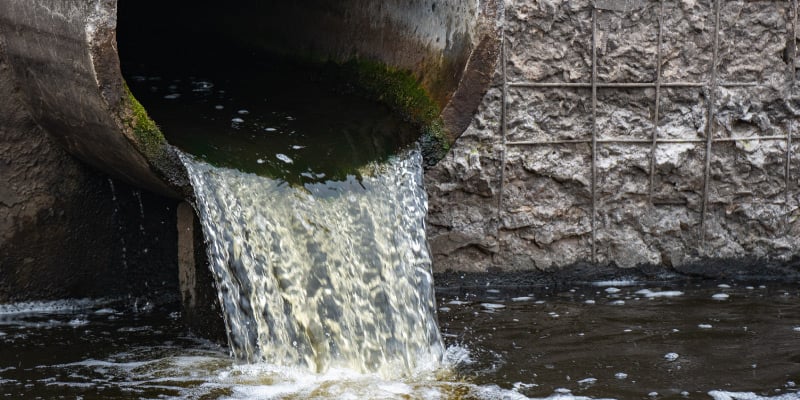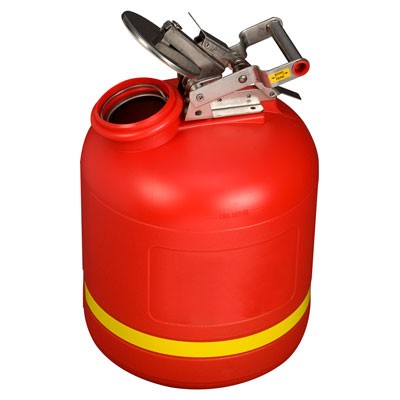Exactly How Fluid Waste Disposal Functions: A Comprehensive Review of Techniques and Technologies Employed

Introduction of Liquid Waste Kind
The intricacy of liquid waste kinds requires a thorough understanding of their characteristics and ramifications for disposal. Fluid waste can extensively be categorized right into numerous types, including industrial, metropolitan, farming, and contaminated materials. Each category shows distinctive properties, calling for certain monitoring approaches to alleviate environmental and health threats.
Industrial fluid waste stems from making procedures and usually consists of a variety of pollutants, such as heavy metals, solvents, and organic substances. Local liquid waste, primarily comprising wastewater from households and business establishments, consists of raw material, nutrients, and virus (industrial wastewater treatment). Agricultural fluid waste, including drainage from ranches, may have fertilizers, pesticides, and pet waste, positioning risks to water top quality and environments
Hazardous fluid waste is identified by its toxicity, sensitivity, or potential to cause harm. Comprehending these varied fluid waste kinds is crucial for establishing efficient disposal approaches and making certain compliance with ecological regulations.
Physical Therapy Techniques

Testing is the preliminary step, where bigger bits and particles are removed from the liquid waste using displays or grates. This process secures downstream devices from damage and guarantees smoother procedure. Following testing, sedimentation utilizes gravitational force to different solids from fluids. In sedimentation tanks, much heavier particles clear up at the bottom, creating a sludge layer, while the cleared up liquid can be additional dealt with.
Filtration is an additional necessary technique that entails passing the fluid with permeable materials, such as sand or membrane layers, to record smaller sized fragments. This step boosts the quality of the fluid, making it suitable for subsequent treatment procedures.

Chemical Therapy Strategies
Chemical therapy strategies are crucial for successfully taking care of fluid waste, specifically in addressing liquified and colloidal impurities that physical methods may not appropriately get rid of. These strategies utilize numerous chemical agents to neutralize, speed up, or transform hazardous compounds into much less damaging types.
One common method is coagulation and flocculation, where chemicals such as alum or ferric chloride are included in promote the gathering of put on hold particles. This procedure boosts sedimentation, permitting simpler elimination of the resulting sludge. Additionally, oxidation procedures, employing representatives like chlorine or ozone, are used to damage down intricate organic substances and virus, providing the waste safer for discharge or more therapy.
Neutralization is another critical technique, which readjusts the pH of acidic or alkaline waste streams to neutral levels, stopping possible damage to downstream systems and the atmosphere. Additionally, advanced oxidation procedures (AOPs) use mixes of oxidants and ultraviolet light to break down relentless pollutants, achieving a higher degree of treatment performance.
Organic Therapy Processes
Biological therapy processes play an important function in the administration of liquid waste by utilizing microorganisms to break down organic matter and reduce impurity degrees. These processes can be generally categorized right into anaerobic and cardio therapies, each utilizing details microbial communities to accomplish reliable waste destruction.
Cardiovascular treatment involves making use of oxygen to promote the break down of natural materials by germs. read here This procedure is typically implemented in activated sludge systems, where aeration tanks give a conducive environment for microbial growth, leading to the oxidation of natural toxins. The resultant biomass can be separated from treated effluent with sedimentation.
In contrast, anaerobic therapy happens in the lack of oxygen, depending on different germs to damage down raw material. This technique is especially beneficial for high-strength waste, as it creates biogas, an eco-friendly energy source, while lowering sludge manufacturing. Technologies such as anaerobic digesters are often employed in industrial and municipal applications.
Both anaerobic and cardio biological treatments not just reduce the ecological influence of fluid waste yet additionally facilitate resource recuperation, making them important parts of sustainable waste monitoring methods. Their performance, versatility, and performance sustain their extensive execution across different markets.
Arising Technologies in Disposal
Innovative strategies to fluid garbage disposal are swiftly evolving, driven by innovations in modern technology and a boosting focus on sustainability. Among these arising innovations, membrane layer bioreactors (MBRs) have actually gotten grip for their ability to combine organic treatment with membrane layer filtering, causing premium effluent that can be recycled in various applications. MBRs enable smaller sized footprints and more reliable procedures contrasted to typical systems.
An additional encouraging development is making use of anaerobic food digestion integrated with nutrient recuperation technologies, which not only treats fluid waste but also generates biogas and recovers important nutrients like nitrogen and phosphorus. This double benefit improves resource effectiveness and minimizes ecological influence.
Additionally, advanced oxidation procedures (AOPs) are being adopted for the deterioration of intricate organic pollutants. These techniques make use of powerful oxidants and drivers to damage down contaminants at the molecular degree, providing an extremely reliable remedy for difficult waste streams.
In addition, the combination of expert system and device knowing in waste management systems is enhancing operational performance and predictive maintenance, leading to lowered costs and improved link ecological compliance. These technologies mirror a substantial shift towards even more effective and sustainable liquid garbage disposal methods.
Final Thought
In final thought, reliable liquid waste disposal requires a comprehensive understanding of different techniques and innovations. By constantly progressing these approaches, it becomes feasible to address the expanding obstacles connected with fluid waste, ultimately contributing to environmental defense and source healing.
Fluid waste disposal is a vital element of environmental administration, requiring a thorough understanding of numerous strategies and pop over to this site technologies customized to various waste kinds. Fluid waste can generally be categorized into a number of types, consisting of commercial, community, agricultural, and unsafe waste. Agricultural liquid waste, including overflow from farms, might include fertilizers, pesticides, and animal waste, posing threats to water quality and ecosystems.
Various physical therapy methods play an important function in taking care of liquid waste efficiently - industrial wastewater treatment.In final thought, effective fluid waste disposal demands a thorough understanding of various methods and technologies